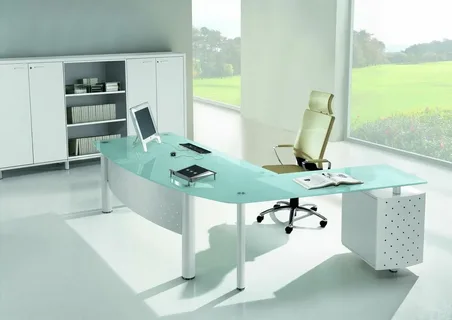In today’s fast-paced corporate environment, the importance of well-designed office furniture cannot be overstated. Whether it’s a startup setting up a new office or a multinational company revamping its workspace, selecting the right office furniture plays a crucial role in shaping the overall work atmosphere. Good office furniture is not just about aesthetics—it’s about functionality, comfort, and productivity. The evolving trends in workplace design show a marked shift toward ergonomic, space-saving, and sustainable furniture solutions that align with modern work culture. From sleek workstations and ergonomic chairs to collaborative desks and storage systems, office furniture has become a defining element of workplace dynamics.
Creating a Productive Work Environment with the Right Furniture
One of the most critical factors influencing employee performance is the physical workspace. A well-furnished office boosts morale, reduces fatigue, and fosters collaboration. Ergonomic office furniture, in particular, has gained widespread popularity for its ability to improve posture, minimize health risks, and support long working hours. Chairs with adjustable height, lumbar support, and swivel capabilities ensure that employees maintain good posture throughout the day, reducing the risk of back pain and repetitive strain injuries. Similarly, desks that allow for both sitting and standing positions contribute to a healthier work routine. When employees are physically comfortable, their focus and efficiency increase, making quality office furniture an investment in long-term productivity.
Ergonomics and Employee Wellbeing in Office Spaces
Ergonomic design is no longer a luxury but a necessity in the corporate world. With employees spending a significant portion of their day seated at their desks, poorly designed furniture can lead to health problems such as musculoskeletal disorders, eye strain, and stress. Modern office furniture incorporates ergonomic principles to support the natural posture of the human body. Features like breathable mesh backrests, height-adjustable armrests, and contoured seat cushions contribute to physical comfort and mental clarity. Standing desks are also becoming increasingly popular, as they promote movement, reduce sedentary behavior, and enhance energy levels. When offices prioritize ergonomics, they send a strong message that employee wellbeing is a top priority.
Maximizing Space Efficiency with Smart Furniture Choices
Another key consideration when choosing office furniture is space optimization. As office real estate becomes more expensive, making the most out of every square foot is essential. Modular and multi-functional furniture has emerged as a game-changer for small to mid-sized offices. Desks with built-in storage, foldable meeting tables, and mobile filing cabinets help reduce clutter and make the space more organized. Open-plan offices also benefit from flexible furniture that can be easily reconfigured for different needs—whether it’s a team brainstorming session or a quiet individual workspace. With the right planning and furniture layout, even a compact office can look spacious, efficient, and inviting.
Aesthetic Appeal and Brand Image Through Office Design
First impressions matter, and the look and feel of an office can say a lot about a company’s identity. Stylish and well-coordinated office furniture reflects professionalism, attention to detail, and brand values. For instance, a creative agency might opt for vibrant, bold furniture pieces that inspire innovation, while a law firm may prefer classic wood furniture that exudes elegance and authority. The color scheme, material, and style of furniture should align with the company’s mission and culture. Offices that invest in visually appealing furniture also create a welcoming environment for clients, partners, and prospective employees. The aesthetics of office furniture should never be an afterthought—it is an extension of the company’s personality.
Sustainability and Eco-Friendly Furniture Trends
With increasing awareness about environmental conservation, sustainable office furniture is gaining momentum. Companies are now looking for eco-friendly options made from recycled materials, FSC-certified wood, and low-emission manufacturing processes. Sustainable furniture not only reduces the carbon footprint but also enhances the brand’s reputation as a responsible corporate entity. Additionally, furniture that is durable and built to last reduces the need for frequent replacements, offering both ecological and economic benefits. Investing in green furniture shows that a company values the planet and is committed to ethical business practices, which resonates well with employees and clients alike.
Technology Integration in Modern Office Furniture
As workplaces become more digitally connected, office furniture is evolving to accommodate technology seamlessly. Today’s desks and tables are designed with integrated cable management systems, built-in USB charging ports, and power outlets to keep devices connected and clutter-free. Some advanced furniture systems even include wireless charging pads, touch screen controls, and smart sensors that adjust lighting and temperature. These innovations support a smooth workflow and reduce the distractions caused by tangled wires and inadequate connectivity. By choosing tech-friendly office furniture, companies can enhance operational efficiency and keep up with the digital demands of the modern workplace.
Customization and Flexibility to Match Evolving Needs
No two offices are the same, and the best furniture solutions are those that cater to the specific needs of a business. Customizable office furniture allows companies to create a layout that aligns with their workflow and employee preferences. Whether it’s selecting the right dimensions, colors, materials, or configurations, customization ensures that every piece serves its purpose effectively. Moreover, flexible furniture that can be reassembled, relocated, or repurposed adds value as the business grows or evolves. Companies that embrace adaptable office furniture are better equipped to handle changes in team size, function, or office location without starting from scratch.
Conclusion: Invest in Quality for Long-Term Gains
Choosing the right office furniture is not merely a matter of decor—it’s a strategic decision that affects productivity, employee wellbeing, brand perception, and overall operational efficiency. From ergonomic designs and space-saving solutions to sustainable and tech-integrated options, the modern office demands furniture that goes beyond aesthetics. When businesses prioritize quality, functionality, and design in their furniture choices, they create an environment where employees thrive and clients are impressed. For any organization looking to transform its workspace into a hub of creativity and performance, investing in well-designed office furniture is the first step toward long-term success.

